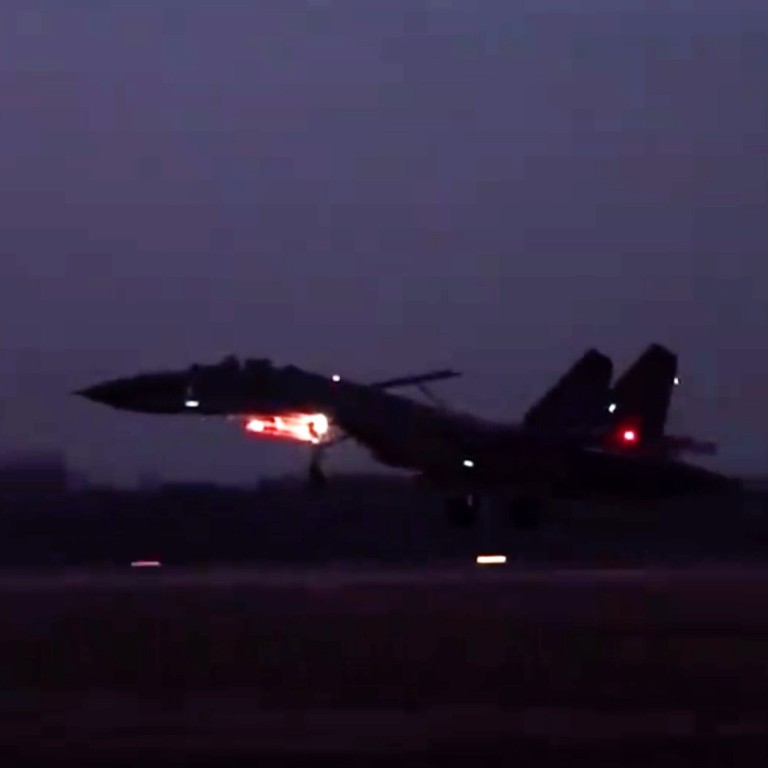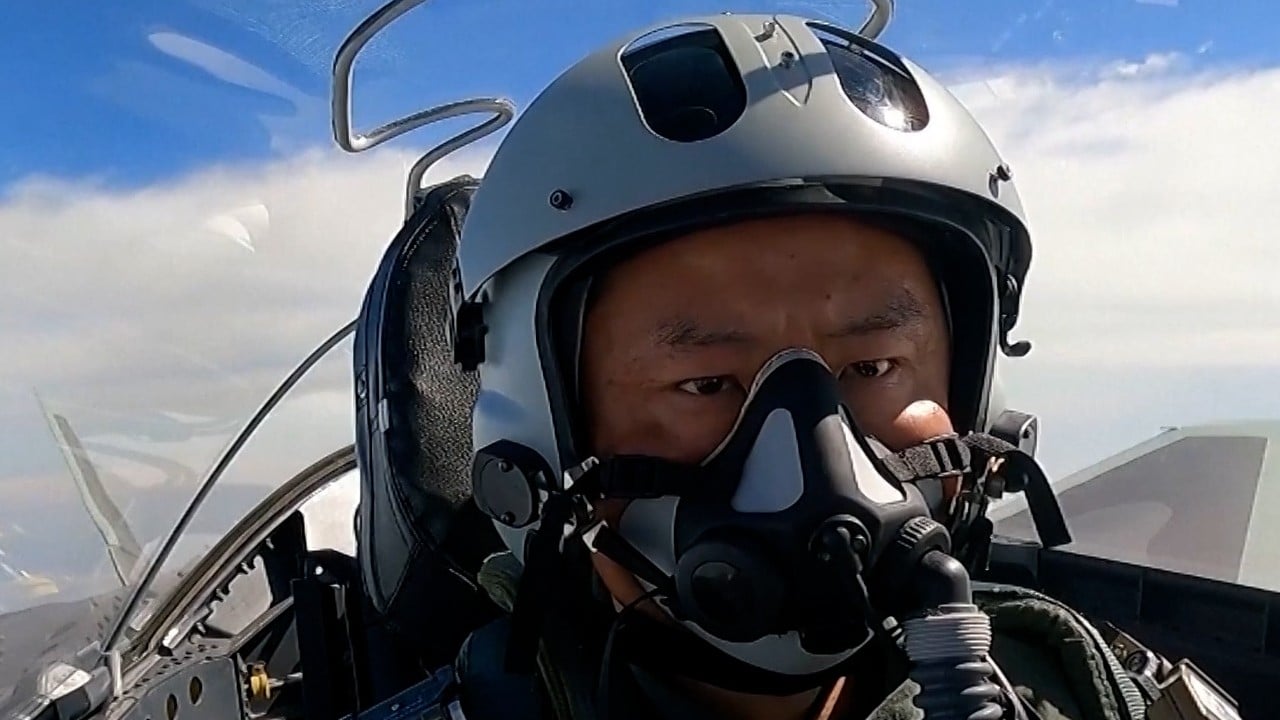
Chinese military stepping up night drills to counter US, analysts say as state TV airs footage
- Activities along coasts of East China and South China seas increasing, with particular emphasis on hours between midnight and dawn, observers say
- PLA Navy held nearly 100 night drills in 2021 compared with 30 in 2020, analyst says
A PLA Navy flotilla led by the Type 052D destroyer Zibo and Type 054A frigate Yang Zhou this month conducted a two-day live-fire exercise in the East China Sea, state broadcaster CCTV reported on Wednesday.
The exercises included underwater reconnaissance, and air-defence and ship-to-ship strikes, CCTV said. Video clips showed navy forces downing approaching torpedoes, and launching ship-to-air jamming bombs and ship-to-ship missiles to make precise strike hits, practising their rapid response in multiple-mission scenarios.
Another day-and-night drill, involving a Type 071 amphibious transport dock, took place off the coast of Guangdong, close to Hainan island. Marines drove several ZBD-05 amphibious infantry fighting vehicles and ZTD-05 amphibious assault vehicles to land on the island at night, according to CCTV on Tuesday.
J-10B and J-10BS jets were reported to have flown distances of more than 5,000km (3,000 miles) in less than 20 hours in a day-and-night cross-regional exercise early this month. The long flights required pilots to stop at several unfamiliar airbases for short rests, in a test of their stamina, rapid response and logistics support.
Defence analysts said the PLA’s navy and air force had enhanced night training this year because the Americans had stepped up reconnaissance and other military activities in the region.
Lu Li-shih, a former instructor at Taiwan’s Naval Academy in Kaohsiung, said the PLA Navy’s activities in the Yellow, East China and South China seas included nearly 100 night drills last year, including 70 between midnight and dawn, compared with 30 at night in 2020, with 11 between midnight and dawn.
“[The PLA] not only increased air-defence missile strike drills covering anti-drone, rotorcraft and short-range missiles, but also extended their training area to counter the Americans’ close-in reconnaissance at sea and in the air,” Lu told a workshop at National Taiwan University on Thursday.
Zhou Chenming, a researcher from the Yuan Wang military science and technology think tank in Beijing, said the new training schedules were in response to the activities of US aircraft and warships, which always took place between midnight and 2am.
“The PLA now focuses on training in the East China and South China seas because the American aircraft always take off from their bases in South Korea and Japan, as well as the Philippines and other bases, to fly to China’s coastal areas for close-in reconnaissance,” he said.
“The Chinese military has come up with a series of countermeasures to deal with their American counterparts, as the US Navy keeps increasing so-called freedom of navigation operations.”
The Beijing-based South China Sea Strategic Situation Probing Initiative (SCSPI), which tracks military operations, said that last year there were a total of 1,200 reconnaissance flights and 419 sea days’ worth of operations by spy ships.
There were also record levels of spy plane activity, with 94 sorties in November, including 10 in one day, the SCSPI said.



